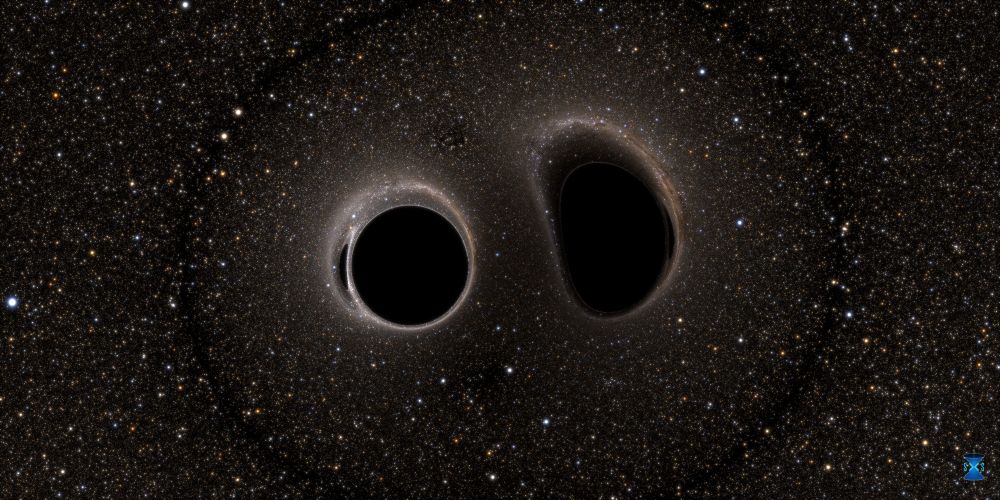
SXS = Simulating eXtreme Spacetimes
🌐 https://www.black-holes.org/
🔒 journals.aps.org/prl/abstract...
🔓 arxiv.org/abs/2504.15978
🧪⚛️🔭

🔒 journals.aps.org/prl/abstract...
🔓 arxiv.org/abs/2504.15978
🧪⚛️🔭


6/13

6/13
4/13
4/13
3/13

3/13
1/13
🧪⚛️🔭

1/13
🧪⚛️🔭
⚛️🧪🔭

⚛️🧪🔭
🧪⚛️🔭

🧪⚛️🔭
📄 arxiv.org/abs/2502.02739

📄 arxiv.org/abs/2502.02739
New GPU-based 3D simulations by SXS researchers Elias Most & Hai-Yang Wang at @caltech.edu reveal strong magnetic fields arresting gas dynamics near the merger.
arxiv.org/abs/2410.23264

New GPU-based 3D simulations by SXS researchers Elias Most & Hai-Yang Wang at @caltech.edu reveal strong magnetic fields arresting gas dynamics near the merger.
arxiv.org/abs/2410.23264
This review, by members of SXS, is now published in Classical and Quantum Gravity. And, it's Open Access!
A review of gravitational memory and BMS frame fixing in numerical relativity
🔓 CQG: iopscience.iop.org/article/10.1...
🔓 arXiv: arxiv.org/abs/2405.08868
🧪⚛️🔭

This review, by members of SXS, is now published in Classical and Quantum Gravity. And, it's Open Access!
A review of gravitational memory and BMS frame fixing in numerical relativity
🔓 CQG: iopscience.iop.org/article/10.1...
🔓 arXiv: arxiv.org/abs/2405.08868
🧪⚛️🔭
🧪⚛️🔭

🧪⚛️🔭
6/8

6/8
Convergence!
5/8


Convergence!
5/8
4/8


4/8
3/8

3/8
2/8


2/8
Simulating binary black hole mergers using discontinuous Galerkin methods
arxiv.org/abs/2410.00265
Led by Kyle Nelli and Geoffrey Lovelace
1/8 🧪⚛️🔭 #🧮

Simulating binary black hole mergers using discontinuous Galerkin methods
arxiv.org/abs/2410.00265
Led by Kyle Nelli and Geoffrey Lovelace
1/8 🧪⚛️🔭 #🧮
2/2



2/2
Small muons, pions, & neutrinos make a sizeable difference when neutron stars collide!
SXS members Michael Pajkos & Elias Most (@caltech.edu) dive in with this latest preprint: arxiv.org/abs/2409.09147
🧪🔭 ⚛️ 1/

Small muons, pions, & neutrinos make a sizeable difference when neutron stars collide!
SXS members Michael Pajkos & Elias Most (@caltech.edu) dive in with this latest preprint: arxiv.org/abs/2409.09147
🧪🔭 ⚛️ 1/
2/

2/
Einstein-Klein-Gordon system via Cauchy-characteristic evolution: Computation of memory and ringdown tail
arxiv.org/abs/2409.06141
Led by Sizheng Ma (Perimeter Inst.)
What's it all about?
🧪⚛️🔭 #🧮 1/

Einstein-Klein-Gordon system via Cauchy-characteristic evolution: Computation of memory and ringdown tail
arxiv.org/abs/2409.06141
Led by Sizheng Ma (Perimeter Inst.)
What's it all about?
🧪⚛️🔭 #🧮 1/
We're the Simulating eXtreme Spacetimes collaboration! You may know us from such hits as "What are the gravitational waves from a black-hole neutron-star merger?" or "What would you actually see looking at a black hole binary?"
Image credit: SXS Lensing
🧪🔭⚛️ #🧮

We're the Simulating eXtreme Spacetimes collaboration! You may know us from such hits as "What are the gravitational waves from a black-hole neutron-star merger?" or "What would you actually see looking at a black hole binary?"
Image credit: SXS Lensing
🧪🔭⚛️ #🧮

